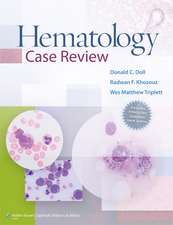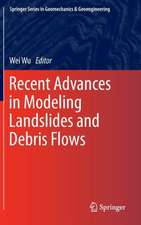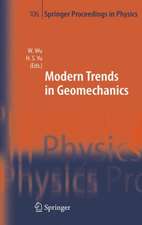Next Generation Sequencing in Cancer Research: Volume 1: Decoding the Cancer Genome
Editat de Wei Wu, Hani Choudhryen Limba Engleză Hardback – 4 aug 2013
| Toate formatele și edițiile | Preț | Express |
|---|---|---|
| Paperback (1) | 1288.99 lei 6-8 săpt. | |
| Springer – 24 aug 2015 | 1288.99 lei 6-8 săpt. | |
| Hardback (1) | 1303.26 lei 6-8 săpt. | |
| Springer – 4 aug 2013 | 1303.26 lei 6-8 săpt. |
Preț: 1303.26 lei
Preț vechi: 1371.86 lei
-5% Nou
Puncte Express: 1955
Preț estimativ în valută:
249.40€ • 258.91$ • 207.97£
249.40€ • 258.91$ • 207.97£
Carte tipărită la comandă
Livrare economică 22 martie-05 aprilie
Preluare comenzi: 021 569.72.76
Specificații
ISBN-13: 9781461476443
ISBN-10: 1461476445
Pagini: 385
Ilustrații: XII, 383 p.
Dimensiuni: 155 x 235 x 23 mm
Greutate: 0.91 kg
Ediția:2013
Editura: Springer
Colecția Springer
Locul publicării:New York, NY, United States
ISBN-10: 1461476445
Pagini: 385
Ilustrații: XII, 383 p.
Dimensiuni: 155 x 235 x 23 mm
Greutate: 0.91 kg
Ediția:2013
Editura: Springer
Colecția Springer
Locul publicării:New York, NY, United States
Public țintă
ResearchCuprins
1. The evolution of high-throughput sequencing technologies: from Sanger to single molecule sequencing…..Chee-Seng Ku, Yudi Pawitan, Mengchu Wu, Dimitrios H. Roukos, David N. Cooper
2. Next generation sequencing in cancer epigenomics and potential clinical applications….Hong Kiat Ng, Dimitrios H. Roukos, Barry Iacopetta, Chee-Seng Ku
3. Next Generation Sequencing for Cancer Genomics…..Aarti N Desai and Abhay Jere
4. Genomic Landscape of Cancer Metastasis….Arvind Kumar Singla, Chandini Thirukkumaran and Wei Wu
5. Mapping the HIF transcription factor in cancer by ChIP-seq technology…..Johannes Schödel and David R. Mole
6. Application of next-generation sequencing to analysis of TGFβ/SMAD4 targets in ovarian cancer…..Russell Bonneville, Kenneth Nephew, and Victor X. Jin
7. Targeted Sequencing Strategies in Cancer Research…..HoJoon Lee, Billy T. Lau and Hanlee P. Ji
8. Comprehensive genomic alterations in common cancer cell lines revealed by exome-sequencing…..Han Chang, Donald G. Jackson, Paul S. Kayne, Petra B. Ross-Macdonald, Rolf-Peter Ryseck, and Nathan O. Siemers
9. Application of next generation sequencing in RNA biomarker discovery in cancer research…..Stephen P. Fink, and Kishore Guda
10. Understanding the role of long non-coding RNAs in the cancer genome.....Wei Wu and Jennifer A. Chan
11. Identification of piRNAs in HeLa cells by massive parallel sequencing.....Yilu Lu and Yongxin Ma
12. microRNA expression in breast cancer revealed by deep sequencing technology.....Thalia A. Farazi, Carl S. Leonhardt, and Thomas Tuschl
13. RNA-seq in prostate cancer research.....ShanCheng Ren, Min Qu, Yinghao Sun
14. Next-generation sequencing for high-throughput RNA interference screens.....Toby M. Ward, Anna-Maria Jegg, and Elizabeth Iorns
15. Assessment of Mapping and SNP-detection Algorithms for Next Generation Sequencing Data for Cancer Genomics.....Weixin Wang, Feng Xu, Junwen Wang
16. Applications of very low coverage sequencing in cancer genomics copy number, virus detection and survival.....Henry M Wood
17. Tumor phylogenetics in the NGS era: Strategies, challenges and future prospects.....Ayshwarya Subramanian, Stanley Shackney and Russell Schwartz
18. Impact and challenges in assessing tumor purity by next-generation sequencing…..Xiaoping Su, Gabriel G. Malouf, and Francisco J. Esteva
2. Next generation sequencing in cancer epigenomics and potential clinical applications….Hong Kiat Ng, Dimitrios H. Roukos, Barry Iacopetta, Chee-Seng Ku
3. Next Generation Sequencing for Cancer Genomics…..Aarti N Desai and Abhay Jere
4. Genomic Landscape of Cancer Metastasis….Arvind Kumar Singla, Chandini Thirukkumaran and Wei Wu
5. Mapping the HIF transcription factor in cancer by ChIP-seq technology…..Johannes Schödel and David R. Mole
6. Application of next-generation sequencing to analysis of TGFβ/SMAD4 targets in ovarian cancer…..Russell Bonneville, Kenneth Nephew, and Victor X. Jin
7. Targeted Sequencing Strategies in Cancer Research…..HoJoon Lee, Billy T. Lau and Hanlee P. Ji
8. Comprehensive genomic alterations in common cancer cell lines revealed by exome-sequencing…..Han Chang, Donald G. Jackson, Paul S. Kayne, Petra B. Ross-Macdonald, Rolf-Peter Ryseck, and Nathan O. Siemers
9. Application of next generation sequencing in RNA biomarker discovery in cancer research…..Stephen P. Fink, and Kishore Guda
10. Understanding the role of long non-coding RNAs in the cancer genome.....Wei Wu and Jennifer A. Chan
11. Identification of piRNAs in HeLa cells by massive parallel sequencing.....Yilu Lu and Yongxin Ma
12. microRNA expression in breast cancer revealed by deep sequencing technology.....Thalia A. Farazi, Carl S. Leonhardt, and Thomas Tuschl
13. RNA-seq in prostate cancer research.....ShanCheng Ren, Min Qu, Yinghao Sun
14. Next-generation sequencing for high-throughput RNA interference screens.....Toby M. Ward, Anna-Maria Jegg, and Elizabeth Iorns
15. Assessment of Mapping and SNP-detection Algorithms for Next Generation Sequencing Data for Cancer Genomics.....Weixin Wang, Feng Xu, Junwen Wang
16. Applications of very low coverage sequencing in cancer genomics copy number, virus detection and survival.....Henry M Wood
17. Tumor phylogenetics in the NGS era: Strategies, challenges and future prospects.....Ayshwarya Subramanian, Stanley Shackney and Russell Schwartz
18. Impact and challenges in assessing tumor purity by next-generation sequencing…..Xiaoping Su, Gabriel G. Malouf, and Francisco J. Esteva
Textul de pe ultima copertă
Next Generation Sequencing (NGS) technology has placed important
milestones in the life science and changed the direction
in biomedical science inclucing cancer. Scientists around the
world are attempting to find the root cause of cancer and they
are looking for more direct and effective means to cure cancer.
This journey to conquer cancer is more optimistic now with
the unfolding of the cancer genome. This book focuses on the
application of various NGS in the frontier cancer genome research.
The 18 chapters in this volume have been written by
scientists with many outstanding contributions in their area
and the join effort has created comprehensive insightful view
on (1) Overview of next generation sequencing technology in
cancer genome research (2) Genome regulation and targeted
sequencing in cancer (3) RNA transcriptome (coding and
non-coding) in cancer genome (4)The challenges of computational
biology for cancer genome study.
This book is a state-of-the-art reference to all scientific researchers
and onologists who are interested in the understanding
of the cancer initiatome at whole genome scale and to those
are keen to translate the ‘base pairs to bedside’ for better management
of cancer patients in the era of personalized medicine.
milestones in the life science and changed the direction
in biomedical science inclucing cancer. Scientists around the
world are attempting to find the root cause of cancer and they
are looking for more direct and effective means to cure cancer.
This journey to conquer cancer is more optimistic now with
the unfolding of the cancer genome. This book focuses on the
application of various NGS in the frontier cancer genome research.
The 18 chapters in this volume have been written by
scientists with many outstanding contributions in their area
and the join effort has created comprehensive insightful view
on (1) Overview of next generation sequencing technology in
cancer genome research (2) Genome regulation and targeted
sequencing in cancer (3) RNA transcriptome (coding and
non-coding) in cancer genome (4)The challenges of computational
biology for cancer genome study.
This book is a state-of-the-art reference to all scientific researchers
and onologists who are interested in the understanding
of the cancer initiatome at whole genome scale and to those
are keen to translate the ‘base pairs to bedside’ for better management
of cancer patients in the era of personalized medicine.
Caracteristici
Applies the Next Generation Sequencing (NGS) technology to practical and real cancer research projects?
Each chapter will briefly cover the outline for bioinformatic analysis
The primary audience are researchers and scientists in cancer biology, molecular biology, and other related areas in biomedical research
Each chapter will briefly cover the outline for bioinformatic analysis
The primary audience are researchers and scientists in cancer biology, molecular biology, and other related areas in biomedical research



















